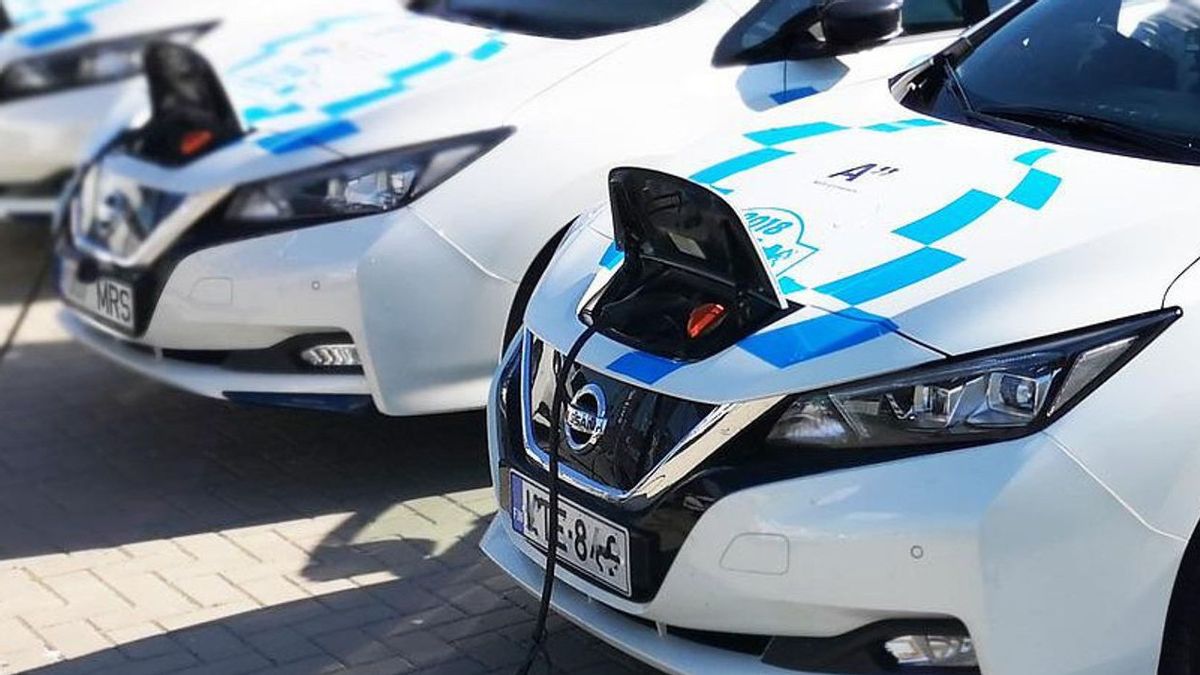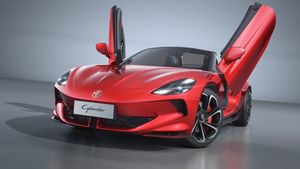YOGYAKARTA There are many types of electric car batteries. As the main component in electric vehicles (Electric Vehicles/EVs), electric car batteries serve as storage or electricity providers. If the battery runs out, it is certain that electric cars will not be able to move.
Just so you know, the type of electric car battery depends on the car system. The electric car battery commonly used is lithium-ion.
Compiled by VOI from various sources, here are the types of electric car batteries and their characteristics.
Litium-ion (Li-ion) batteries are batteries commonly used in portable electronic devices such as cellphones and lapops. On electric vehicles, the storage capacity is made larger.
Li-ion batteries have a very high power to weight ratio. In addition, charging on this type of battery is also very fast and can last a long time.
Lithium-ion batteries have a low level of self-discharge so that they are better than other batteries in maintaining their ability to withstand the full charge.
BEV (Battery Electric Vehicle) and PHEV (Plug-in Hybrid Electric Vehicle) are the types of cars that use the most Li-ion batteries.
The second type of electric car battery is Nickel-metal Hydride (NIMH). The difference between the Li-ion battery and the NiMH lies in the materials used to store power.
The lithium-ion battery is made of carbon and lithium, so it is very reactive and can store a lot of energy. Meanwhile, the NiMH battery utilizes hydrogen to store energy, with nickel and other metals (such as titanium) maintaining the hydrogen ion cap.
This battery is widely used by hybrid electric vehicles (HEVs). The NiMH battery does not get power from outside. Recharging this battery depends on engine speed, wheels, and regenerative braking.
Lead-acid (SLA) batteries are the oldest recharged batteries. This battery cannot compete with lithium and NiMH because the power capacity is small and the weight is heavier.
Currently, SLA batteries are only used by commercial vehicles as a secondary storage system.
Solid-state batteries are able to remove heavy liquid electrolytes that live in Li-ion batteries. The heavy liquid electrolytes are then replaced with solid electrolytes in the form of glasses, ceramics, or other materials.
Structurally, solid-state batteries are very similar to traditional Li-ion batteries. However, without battery fluid it can be much more solid and compact.
Although not a new discovery, the use of solid-state batteries in the auto industry has recently been.
This type of electric car battery has many advantages, such as significant storage density and usage costs of around 500 to 1,000 charging cycles.
However, this battery is very susceptible to memory effects, a physical phenomenon in the form of a decrease in battery performance if it experiences a partial 'frame' cycle.
The use of the Ni-Cd battery is currently prohibited due to the toxicity of the cadmium.
This type of electric vehicle battery is different from other electrochemical batteries. The reason is, the ultracapacitor battery stores polarized liquid between electrodes and electrolytes. With the increase in the surface area of the fluid, the energy storage capacity also increases.
In electric vehicles, the ultracapacitor battery is used as a secondary storage device because it can help the electrochemical battery increase its load level.
In addition, ultracapacitor batteries can also generate extra power for electric vehicles during acceleration and regenerative braking.
That's information about the type of electric car battery. Some types of batteries function to support the performance of the main battery in running electric cars.
The English, Chinese, Japanese, Arabic, and French versions are automatically generated by the AI. So there may still be inaccuracies in translating, please always see Indonesian as our main language. (system supported by DigitalSiber.id)













